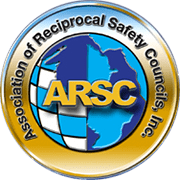Important Update from the Association of Reciprocal Safety Councils (ARSC)
February 18, 2025
In Fall 2024, ARSC launched a comprehensive Request for Proposal (RFP) process to modernize the Basic Orientation Plus (BOP) and Refresher (BOPR) program. After a thorough review of vendor proposals and evaluations, ARSC selected a partner to bring the program into the future.
This morning, ARSC officially signed the partner agreement, marking a major milestone in this modernization effort.
What’s New for the BOP?
The BOP program is evolving to meet industry needs while maintaining its reciprocal standard. The enhanced program will offer:
- Online Training Delivery – Workers will now have the flexibility to complete BOP training online with technology-assisted proctoring.
- Scenario-Based Learning – Interactive modules will simulate real-world safety challenges, engaging learners and sharpening critical thinking skills.
